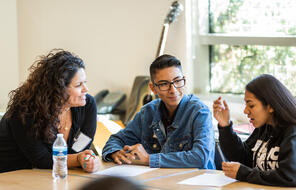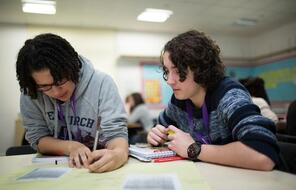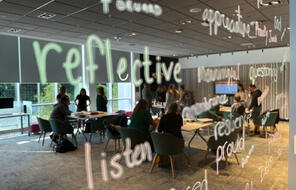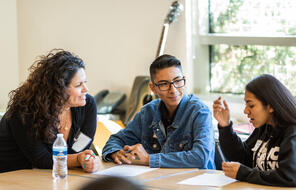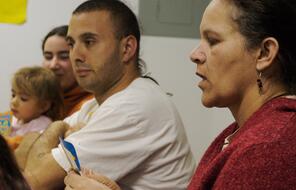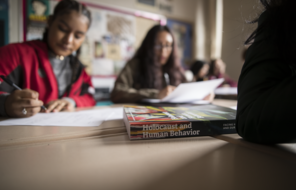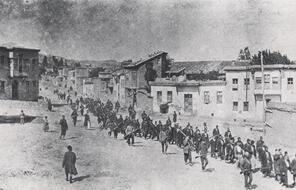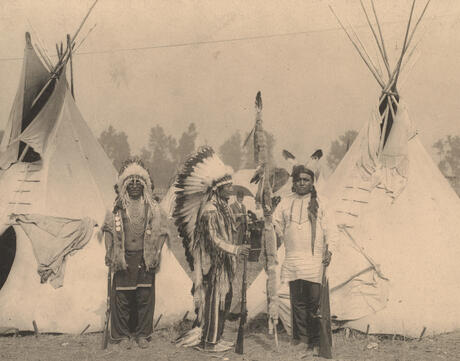
18 Teacher Resources on Native American History and Culture
Here at Facing History, we see heritage and awareness months as opportunities to deepen our knowledge of and attention to the histories and contemporary experiences of historically marginalized communities. However, the focus on celebrating these communities over one particular month can further marginalize the very experiences we are hoping to elevate. With this in mind, what follows is an invitation to engage with important themes raised by Native American Heritage Month this November and throughout all of the months of the year.
Below are 20 resources that middle and high school teachers can turn to when developing lesson plans related to the roles of Native American peoples in American history and contemporary life. These resources include online exhibitions at the Smithsonian; the Smithsonian’s Native Knowledge 360° Educational Initiative; the work of the Mitchell and Hood Museums; and the growing work of Facing History in these thematic areas.
Smithsonian National Museum of the American Indian
Native Knowledge 360° Education Initiative
Native Knowledge 360° (NK360°) provides educators and students with new perspectives on Native American history and cultures. NK360° opens up access to “educational materials, virtual student programs, and teacher training that incorporate Native narratives, more comprehensive histories, and accurate information to enlighten and inform teaching and learning about Native America.”
- The Online Lessons include The Navajo Treaty of 1868: Why Was the Navajo Journey Home So Remarkable (grades 6-8), American Indian Removal: What Does it Mean to Remove a People? (grades 7-12), and Northern Plains Treaties: Is a Treaty Intended to Be Forever? (grades 9-12).
- Youth in Action: Conversations about Our Future is an online series of recorded webinars for middle and high school students that center the stories of young Native visionaries from across the Western Hemisphere working toward equity and social justice for Indigenous Peoples.
Online Exhibitions offerings include “Nation to Nation: Treaties Between the United States and American Indian Nations,” “HIDE: Skin as Material and Metaphor,” and “Why We Serve: Native Americans in the United States Armed Forces”
Mitchell Museum of the American Indian
The Mitchell Museum of the American Indian is “one of only a handful of museums across the country that focuses exclusively on the art, history, and culture of Native American and First Nations peoples from throughout the United States and Canada.”
- Learning and Teaching about Deconstructing Stereotypes: Top Ten Truths
- Teacher’s Guide to the Curriculum
- More Online Resources
Hood Museum
The Hood Museum offers a Native America Collection as well as a Native American Art Teacher Resources portal to help educators and students explore the Hood Museum of Art’s collection of Native American art. It features over 100 objects grouped thematically from four regions of North America.
Facing History
Facing History is engaged in deepening its knowledge and resources on the experiences of Native American people in history and contemporary life. Below are some of our current resources that teachers can share with their students or use to enhance their own learning journey today.
- 5 New YA Books on Native American Lives
Written by a group of Indigenous authors across North America for readers ages 12 and up, these books address themes including Indigenous youth navigating adolescent identity, community, resistance, and imagining new futures, as well as questions that Native and non-Native young people may have about the history and contemporary experiences of Native American populations.
- Indigenous Rights and the Controversy Over Hawaii’s Maunakea Telescope
Since mid-July 2019, Native Hawaiian protesters have been blocking the construction of the Thirty Meter Telescope (TMT) on Maunakea, the highest mountain in Hawaii. The events on Maunakea raise important questions about the US government’s treatment of Indigenous Peoples and Native Hawaiians’ claims to sovereignty. This Teaching Idea provides historical context for the protests against the Thirty Meter Telescope and helps students explore the reasons why many Native Hawaiians oppose its construction.
- Disrupting Public Memory: The Story of the National Day of Mourning
This essay complicates prevailing narratives about the US holiday of Thanksgiving, exposing them as one-sided histories that glorify colonization and ignore the truth of history, particularly for the Indigenous People of the United States.
-
5 Native-Led Podcasts for Media Literacy
The world of podcasting offers a platform for marginalized peoples to share their stories that would otherwise go unheard. These five selections produced by Native American individuals are dedicated to fostering healing within their own communities through the process of telling their stories and sharing their insights. -
5 New Books on Native American History, Life, and Resistance
Facing History staff members selected five books to recommend. These reads explore significant thematic grounds of Native American history and identity to highlight the importance of engaging students in exploring the histories and contemporary realities of Native American peoples. -
7 Must-See Films on Native American History and Life
These seven documentaries cover wide-ranging subject matter including Native American peoples’ roles within and perspectives about the film medium, the women’s rights movement, K-12 education, political leadership, literary arts, musical performance, and language protection efforts. -
Supporting Question 2: Founding Ideals Versus Realities
This is a part of Facing History's C3-aligned inquiry We the People: Expanding the Teaching of the US Founding. Students will explore the question "What contradictions existed between the ideals and the reality of the founding of the United States?"
Pictured above: Black Foot, Standing Bear, Big Eagle, Sioux—three members of the Sioux tribe pose in Indian Village, 1898.
Don't miss out!
- download classroom materials
- view on-demand professional learning
- and more...

